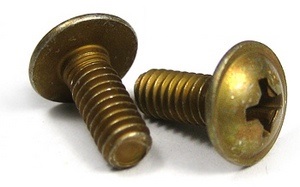RC Allen 2 Prop Tachometer RCA40A-06
MFR Model# RCA40A-06
| Description | Model No. | Part No. |
|---|---|---|
| 2” Prop Tachometer | RCA40A-06 | 10-02616 |
Overview
|
RCA40A-06 (Refer to Image #1) 2" Prop Tachometer, Green Arc from 0 RPM to Red Line at 2200 RPM. RCA40AB-07 (Refer to Image #3) RCA41A-07 (Refer to image #4) 2" Percent Tachometer, Green Arc from 560 RPM to Red Line at 1040 RPM. Many years of experience were drawn upon in the design and development of these tachometers. Only the best time tested and field proven features were used. These instruments use a three phase alternating current synchronous motor powered by a remote tach generator. The simplicity of design results in a twofold gain: increased reliability and ease of overhaul. A large one-piece frame is a very effective heat sink - a very important feature in drawing heat away from the bearings. All intermediate gears and pointer shafts are suspended on precision jewel bearings. These indicators are qualified for many military applications and have successfully passed temperature, vibration and environmental testing that exceeds most OEM requirements. Housed in a 2" diameter hermetically sealed case, Standard ranges for Prop tachometer's are 0 - 2000 or 0 - 4000. On the RCA41 percent tachometers the large pointer indicates 0 to 100% over 270° of pointer travel. Small pointer indicates in 1% increments on a 360° dial. Designed for use with a two pole tach generator conforming to specification MIL-G-9398. Dimensions: 2" diameter x 5"Weight: .7 lbs. Power: Tach Generator, MIL-G-9398 Connector: MS3106A-14S-5S Made in the USA |
Q&A
Please note, Aircraft Spruce Australia's personnel are not certified aircraft mechanics and can only provide general support and ideas, which should not be relied upon or implemented in lieu of consulting an A&P or other qualified technician. Aircraft Spruce Australia assumes no responsibility or liability for any issue or problem which may arise from any repair, modification or other work done from this knowledge base. Any product eligibility information provided here is based on general application guides and we recommend always referring to your specific aircraft parts manual, the parts manufacturer or consulting with a qualified mechanic.

 Aircraft Spruce Australia
Aircraft Spruce Australia





























